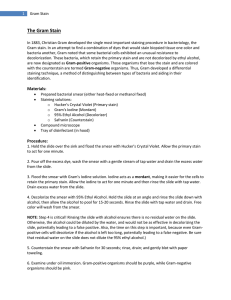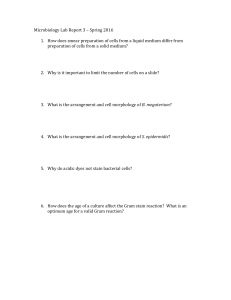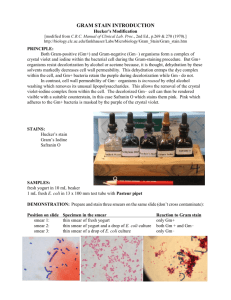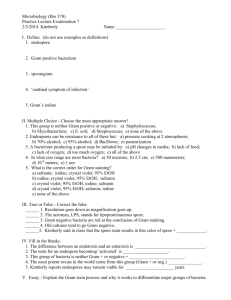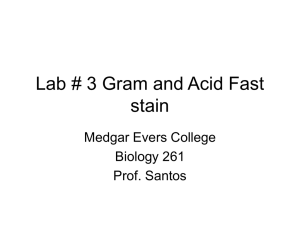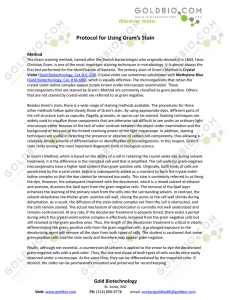Gram Stain Procedure: A Step-by-Step Guide
advertisement
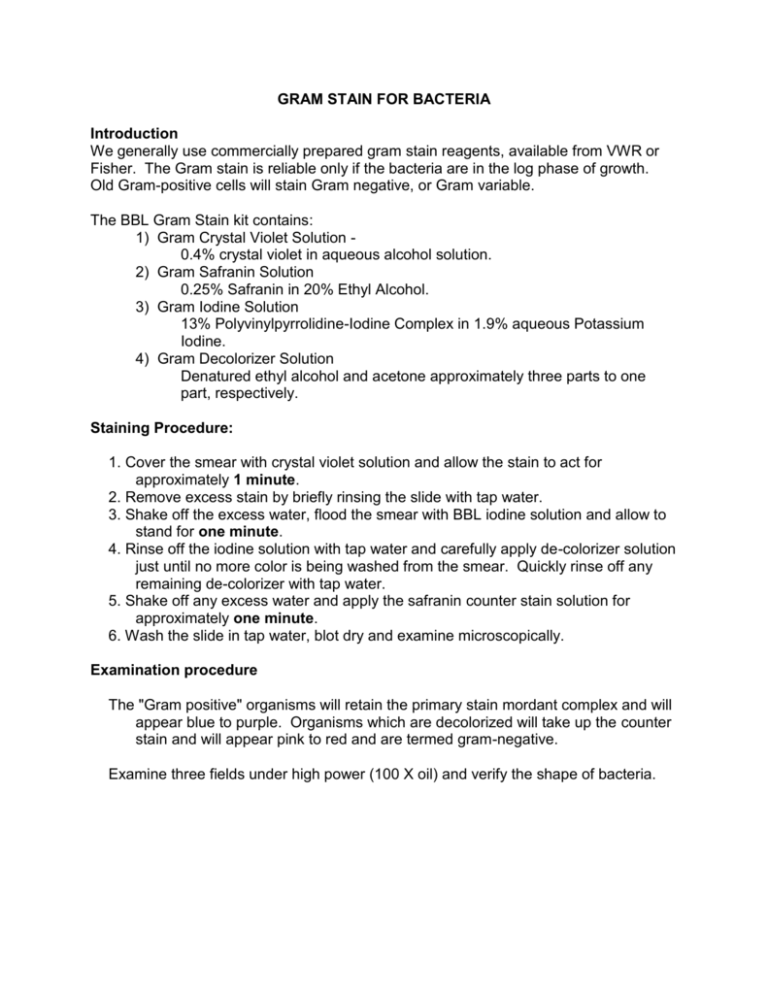
GRAM STAIN FOR BACTERIA Introduction We generally use commercially prepared gram stain reagents, available from VWR or Fisher. The Gram stain is reliable only if the bacteria are in the log phase of growth. Old Gram-positive cells will stain Gram negative, or Gram variable. The BBL Gram Stain kit contains: 1) Gram Crystal Violet Solution 0.4% crystal violet in aqueous alcohol solution. 2) Gram Safranin Solution 0.25% Safranin in 20% Ethyl Alcohol. 3) Gram Iodine Solution 13% Polyvinylpyrrolidine-Iodine Complex in 1.9% aqueous Potassium Iodine. 4) Gram Decolorizer Solution Denatured ethyl alcohol and acetone approximately three parts to one part, respectively. Staining Procedure: 1. Cover the smear with crystal violet solution and allow the stain to act for approximately 1 minute. 2. Remove excess stain by briefly rinsing the slide with tap water. 3. Shake off the excess water, flood the smear with BBL iodine solution and allow to stand for one minute. 4. Rinse off the iodine solution with tap water and carefully apply de-colorizer solution just until no more color is being washed from the smear. Quickly rinse off any remaining de-colorizer with tap water. 5. Shake off any excess water and apply the safranin counter stain solution for approximately one minute. 6. Wash the slide in tap water, blot dry and examine microscopically. Examination procedure The "Gram positive" organisms will retain the primary stain mordant complex and will appear blue to purple. Organisms which are decolorized will take up the counter stain and will appear pink to red and are termed gram-negative. Examine three fields under high power (100 X oil) and verify the shape of bacteria.


